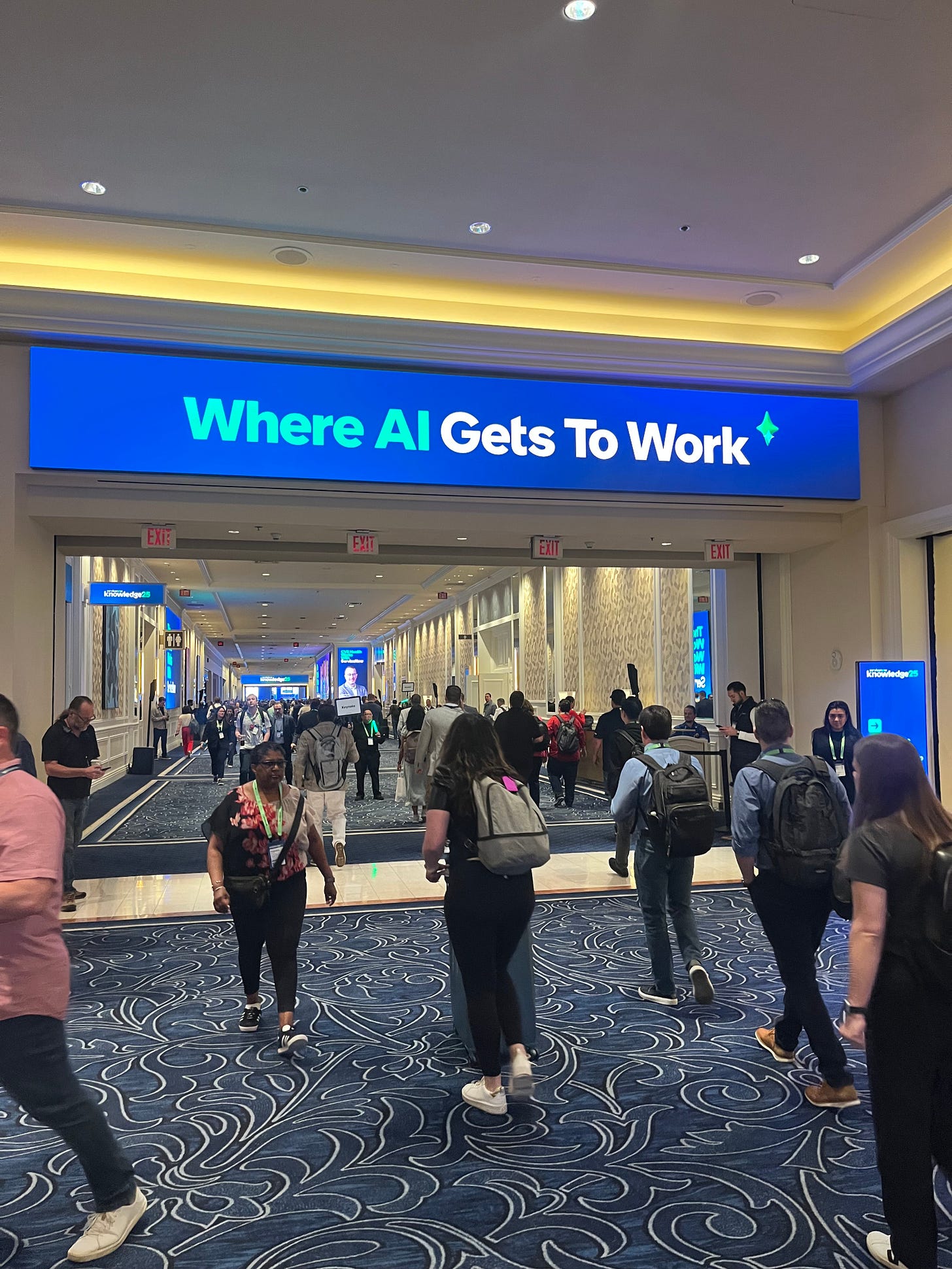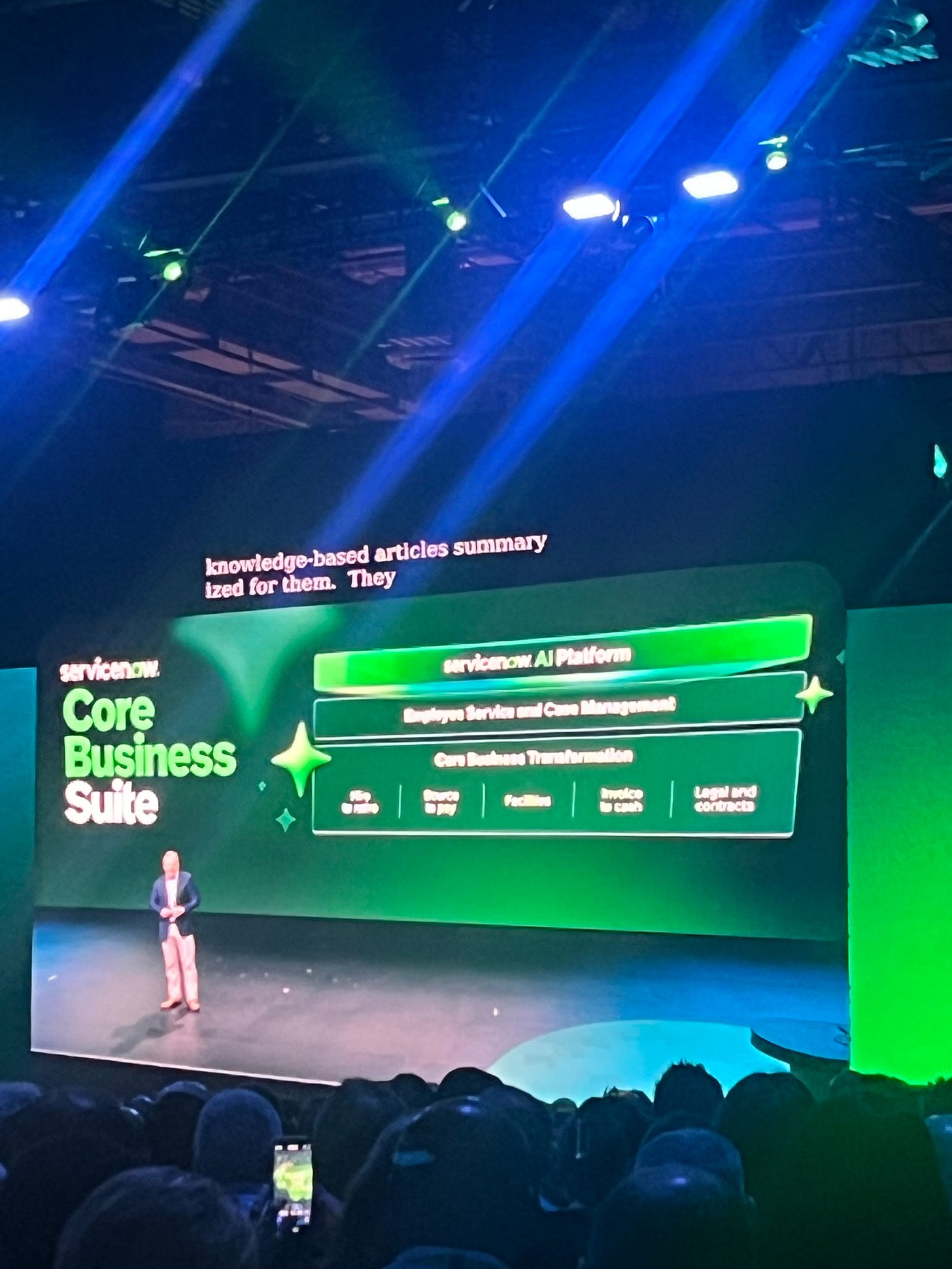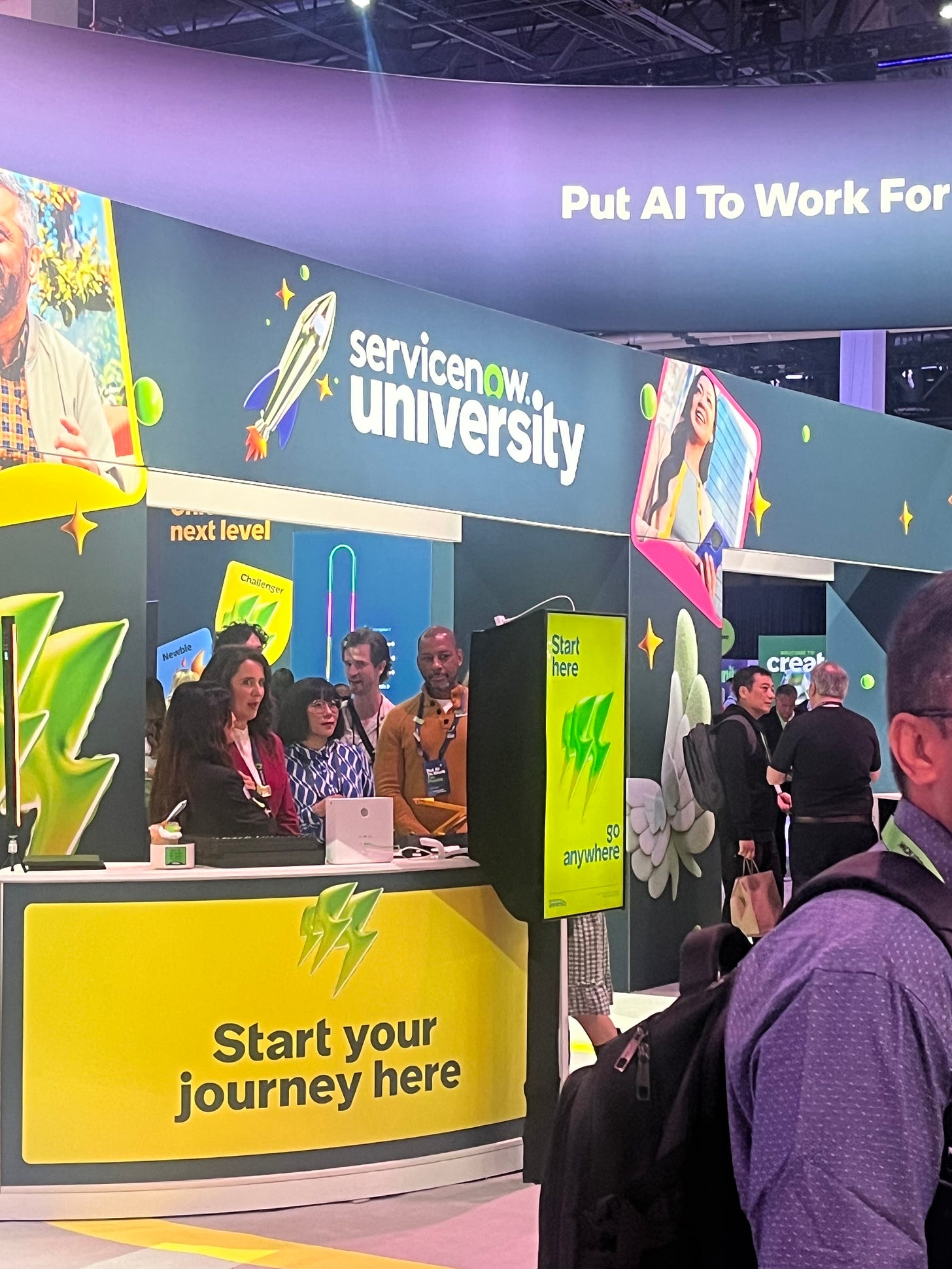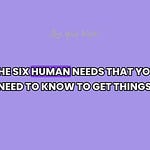Imagine this: I’m in Las Vegas, surrounded by over 20,000 people at the ServiceNow Knowledge 25 conference. There’s excitement in the air—not just because we’re in the party capital of the world, but because of the mind-blowing ServiceNow AI innovations being unveiled left and right.
From the launch of the AI Control Tower to the AI Agent Fabric, from a Unified CRM System to the Workflow Data Fabric, not to mention the big moves: acquiring data.world and partnering with NVIDIA to develop a new reasoning module for AI agents. And then there was the session on autonomous IT—a vision where AI doesn’t just support IT but leads it.
And not to mention the re-badged ServiceNow University (formerly Now Learning) and the vision to make the learning experience more skills focused, individual and gamified that ever before.
The overarching message was clear: the workplace is changing, and AI is about to play a pivotal role in how we think about workplaces, training, leadership, culture, and talent management.
AI is definitely about boosting productivity, revenue, and profitability, but it’s also about something even more exciting for working individuals: improving your workplace experience, reducing repetitive administrative tasks, helping you focus on what really matters so that you love your work more!
After attending this conference, I couldn’t help but think: How will AI help teams do more of the work they love as a competitive advantage?
At the conference, it hit me—AI isn’t just about automating tasks. It’s about fundamentally reimagining the workplace experience. From autonomous IT systems to AI-driven customer and employee experiences, the workplace is evolving fast, and those who embrace these changes will thrive.
So what can leaders focus on to stay ahead?
1. Culture as a Product
We often talk about culture as a vibe or a feeling. But what if we started treating it like a product? That was one of my biggest takeaways from the conference. Rather than top-down directives, culture needs to be designed intentionally, with users, pain points, features, and feedback loops.
I wrote about the The Three Products Every Organisation Are Creating (Whether They Know It or Not) in my last post where I dive more into The Culture as the “People Product”. You can read more ‘here’.
With the new AI Agent Fabric, for instance, we could measure cultural “UX” like customer journeys—using AI-driven insights to see where engagement drops off and what sparks creativity.
Example:
Imagine using the Workflow Data Fabric to track not just project outcomes but team morale and collaboration levels. You’d know when and where culture needs a boost.
Try it Yourself:
Sit down with your team and map out your culture journey. Where do people feel disconnected? Use data to shape cultural improvements—like you would for customer experience.
Research from Gallup shows that organizations with intentionally designed cultures are 21% more profitable. When culture is treated as a product, it becomes a dynamic, evolving part of your business.
2. The Flexible Talent Ecosystem
The Unified CRM System unveiled at the conference reminded me that the traditional org chart might soon become obsolete. Instead, we’re moving toward dynamic, mission-driven squads that form, disband, and reform as needed.
With tools like the AI Control Tower, it’s theoretically easier than ever to coordinate flexible teams, including freelancers, AI agents, and partners. It’s less about static roles and more about agile missions.
Granted, this approach is easier for agile, flat-structured teams and smaller organisations not tied to outdated role frameworks. It won’t be easy, but those who get it right first will win with talent and customers.
Example:
Think of your next project as a mission squad rather than a team. Who has the right skills and passion, regardless of their title?
Try it Yourself:
Experiment with creating a cross-functional team for a project. Forget titles—focus on skills and enthusiasm. Break down silos and see how this flexible approach increases engagement and creativity.
3. Ethical Workplace AI
With AI embedding itself in every facet of the workplace, HR’s role won’t just be about using AI but governing it responsibly. As ServiceNow partners with NVIDIA to build new reasoning modules, it’s clear that AI ethics can’t be an afterthought.
Example:
Develop an AI ethics board within your company. Have it oversee how AI decisions are made and ensure they align with company values.
Try it Yourself:
Choose one AI-driven decision process and evaluate its transparency and fairness. Involve your team and see where improvements can be made. According to MIT, 82% of employees are more likely to trust AI when they understand how it works.
4. Dynamic Talent Matching Systems
Gone are the days of static job titles. Instead, we need identity-driven talent systems—flexible structures that match people to opportunities based on their skills, strengths, and passions.
Example:
Encourage your teams to think of their careers as a growth portfolio rather than a fixed path. If they are currently a project manager but have a passion for data science, take proactive steps to expand skills in that area. Seek opportunities to shadow colleagues working on data projects, or take on tasks that stretch your abilities beyond their current role. Embracing this mindset not only fuels personal growth but also makes teams more agile and valuable.
Try it Yourself:
Offer your team members a skills inventory to help them map out potential growth areas. Encourage lateral moves based on interests and capabilities.
5. Regenerative Work Design
This one’s a super interesting application of AI for me—rethinking well-being.
Instead of being reactive to burnout, we need to proactively design work that regenerates energy.
The concept of autonomous IT at Knowledge 25 made me think: Why not have autonomous well-being systems too? Imagine AI nudging employees to take breaks, practice mindfulness, or switch tasks when their focus dips.
Example:
Offer micro-sabbaticals or no-meeting Fridays to recharge the team. Use AI to track not just productivity but well-being metrics.
Try it Yourself:
Propose a well-being sprint where your team experiments with different energy-boosting practices. Measure the impact on both morale and output.
6. AI-Driven Learning: Personal Growth on Autopilot
One of the most exciting parts of Knowledge 25 was the unveiling of the use of AI in their own ServiceNow University is how it’s reshaping learning and development. Forget one-size-fits-all training programs—AI can create personalized learning paths that evolve as employees grow.
Example:
Imagine using AI to recommend courses, mentorship opportunities, or projects that match an employee’s skills, interests and career goals. Imagine a gamified training experiences that are aligned to organisational goals like productivity, profitability and revenue that nudges behaviour of employees without hours or effort from L&D teams.
Try this:
Experiment with the now free ServiceNow University an AI-driven learning platform that suggests training modules based on performance reviews and personal aspirations.
A study by Deloitte found that organisations using AI to personalise learning see 30% higher engagement rates. It’s all about helping employees thrive—not just survive.
Final Thoughts: Loving Work in the Age of AI
Leaving the Knowledge 25 conference, one thought stuck with me:
AI is not here to make work robotic. It’s here to make work more human by freeing us from mundane tasks and enabling us to focus on culture, creativity, and connection.
With the right mindset, AI will help us love work more. It’s not about being replaced—it’s about reimagining what work can be.
What’s your take on this? Are you ready to embrace these changes in the workplace? Let me know your thoughts!
This has been Rachel Sparkes, exploring culture, creativity, and conscious leadership in the modern workplace.
Love Your Work!













